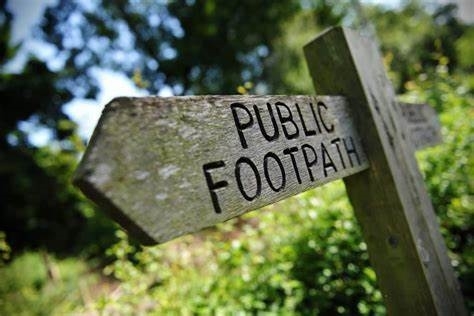Written by Henrietta Appleton, Policy Officer (England)

I have been asked to present on the need to balance conservation with access at a conference on Public Rights of Way. This has instigated me to consider what the network of paths across our landscape means – why do they exist? This happens to coincide with a book I am reading at the moment by Robert Macfarlane - “The Old Ways” - in which he discovers the ‘landscape of the feet’. Many of the paths we use for pleasure today have a deeper cultural (sometimes spiritual) meaning and how they crisscross the landscape is archaeological ‘brail’ – we can see how our ancestors read the landscape to ensure safe passage of humans and livestock.
Some of the most interesting ‘paths’ are found across our foreshores, wetlands and even seas. Who would have thought that paths, or seaways, existed on the water determined by prevailing winds and current. But in centuries gone by movement was by sea with settlements largely on the coastal fringe. Consequently there are clearly defined ‘paths’ that connect these coastal settlements down our west coast right from the Hebridean islands down as far as Spain. Work on these ‘isthmus roads’ (as they were called by Osbert Crawford) proved that there had been maritime traffic on these western seaways as far back as Mesolithic and Roman times.
Back on dry(er) land the historic paths on our foreshores are interesting too. The Broomway on the foreshore in Essex is an example that was recorded as early as the 15th century. It provided access to Foulness Island, probably for farming purposes. On the Solway Firth there are several pathways, or waths, between the Cumbrian and Dumfriesshire coasts, often used today by the haaf net fisherman and in the Somerset Levels the Sweet Track was a wooden track dating from Neolithic times connecting areas of higher, drier ground. The peatlands of the Hebridean islands required similar knowledge to navigate between bogs to access shielings (summer grazings) and peat cuttings.
Then of course there are the ‘famous’ long-distance paths of ancient, sometimes indeterminable, origin, such as the Ridgeway, Icknield Way, Peddars Way, North and South Downs Way and Jurassic Way. These were created as military, pilgrimage and/or trading routes; often changing use between eras. Off these significant paths, there are also the smaller scale local paths around our villages that were entirely functional. For example, paths would exist to enable access to church, the children to walk to school and between farms, villages, valleys or dales. There were even paths used to carry corpses – often called corpse roads – with coffin stones at various places en route to rest the coffin.
Whatever their origin, all these paths (both on land and sea) have one thing in common – they were a necessity. They ensured safe passage across seas or land and were vital in the dissemination of cultures and trading. Many didn’t exist on paper until ordnance surveys in the 19th century. “The Old Ways” recounts how the routes were passed down from generation to generation. On land waymarkers would aid followers as much as local hearsay. Hence the name of the Broomway, renowned as the deadliest path in Britain, which was marked out by bundles of twigs attached to short poles. Clearly static waymarkers such as found on the land would not be possible in the seascapes, so knowledge was more likely to be transferred by word and fable.
In today’s world this functional necessity has been overtaken by roads, rail and satellite guided shipping lanes so that our ‘relict’ paths are now largely walked for recreational purposes – a route to follow to enjoy the countryside, often ‘grouped’ into circular walks of varying lengths to appeal to the casual and earnest walker alike. This change in ‘use’ reflects the broader trends in society since many of these ancient paths were created before the industrial revolution took the largely rural population into towns and cities. The title of this blog comes from a foreword to a book I found on
paths which emphasised that paths are the result of the passage of many feet over time therefore they are the crystallisation of a collective life process (i).
This link with the past to me is fascinating – we follow the same ‘desire paths’ as our predecessors and so look at the landscape (briefly) through their eyes. But I wonder how many who enjoy the rights of access we have today for recreational purposes realise their history and that they are vested in the needs of our ancestors to reach summer grazings or to trade or to undertake pilgrimage.
(Note: These monthly musings are intended as interest pieces and to provoke thought. I do not pretend to have deep knowledge about the subjects I am covering or indeed to be comprehensive in my coverage. I hope you enjoy reading them as much as I enjoy researching and writing them.)
(i) PATHWAYS: EXPLORING THE ROUTES OF A MOVEMENT HERITAGE Edited by Daniel Svensson, Katarina Saltzman and Sverker Sörlin. The White Horse Press. 2022.